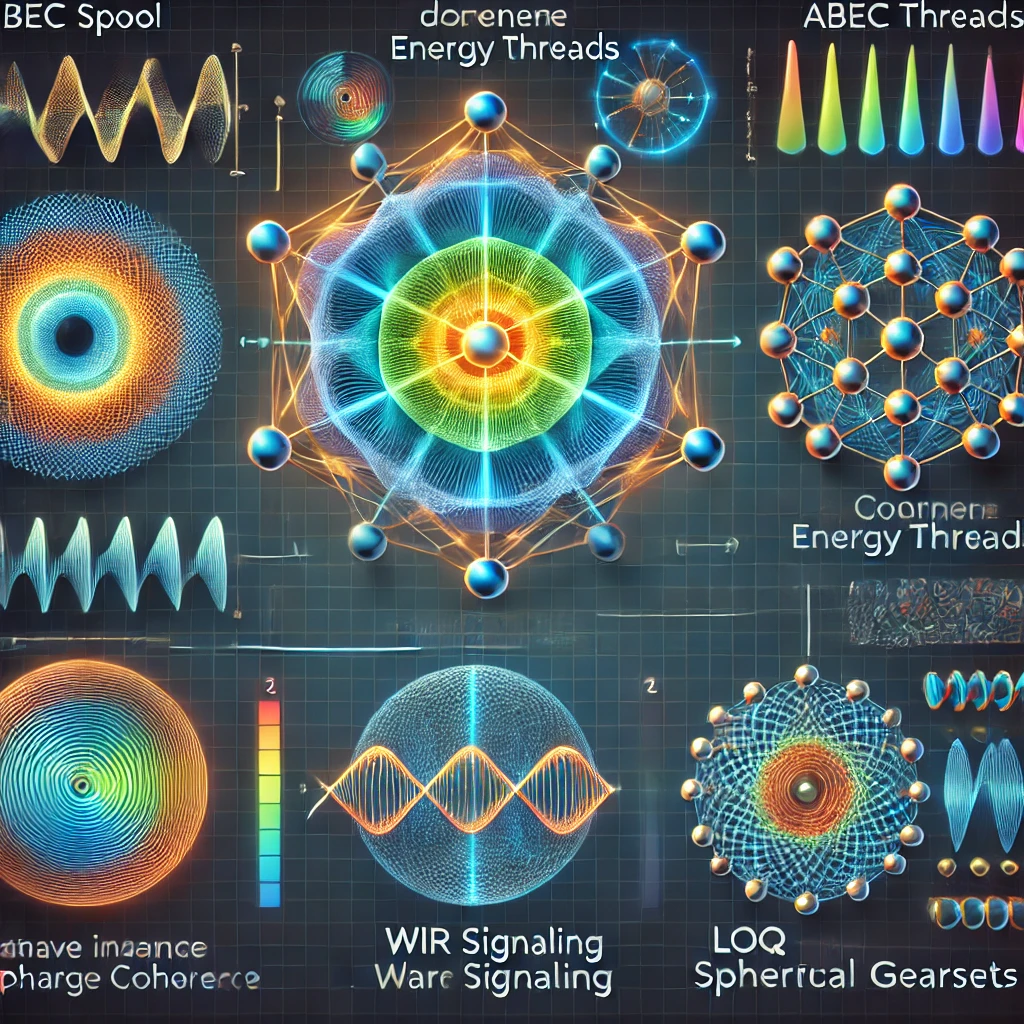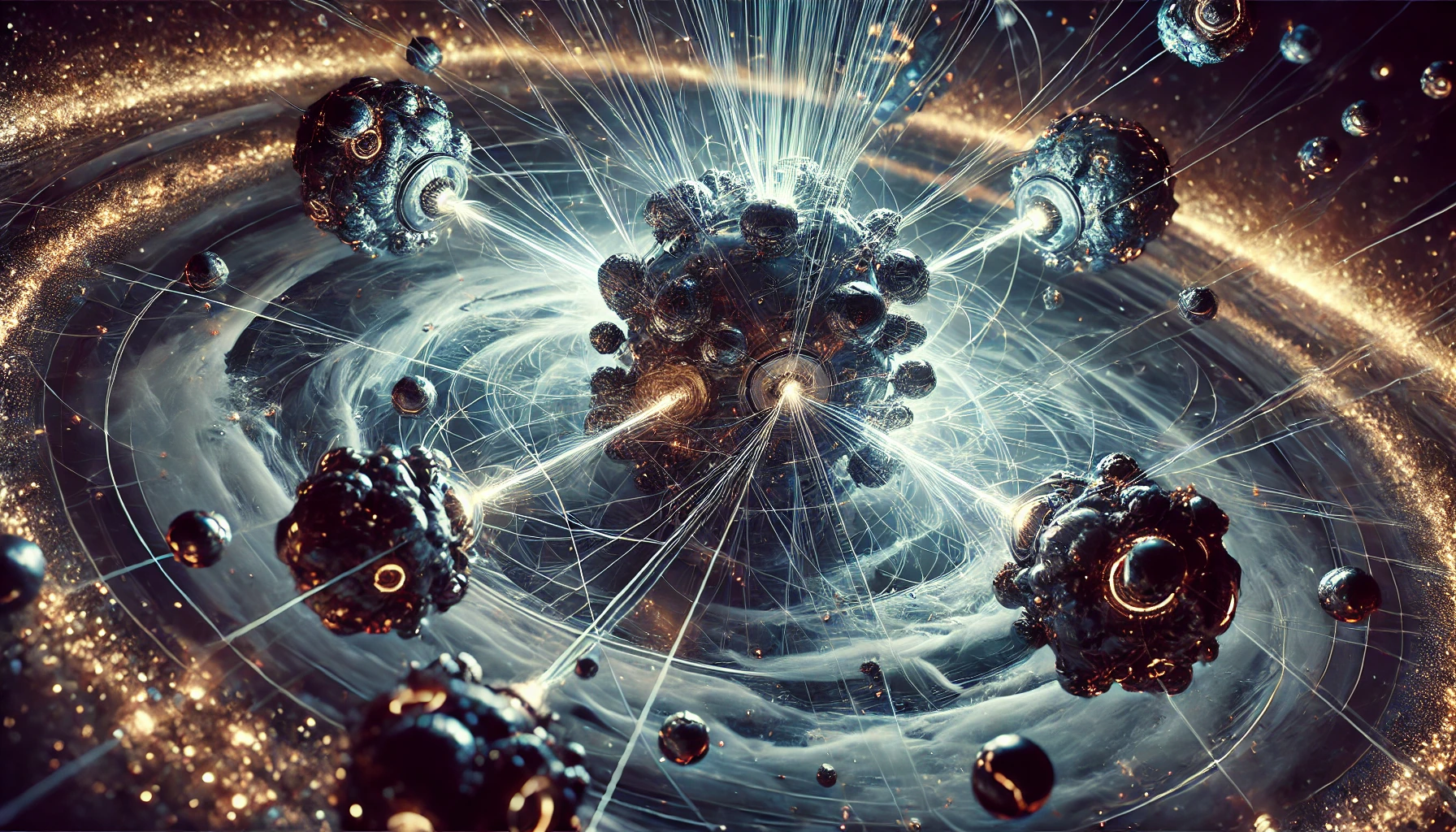Continuum Relay
Ranging to gravitational waves through photonic exchanges.
Ranging to gravitational waves through photonic exchanges.
The Photon-Based Continuum Relay (PBCR) explores the unique relationship between gravitational waves and electromagnetic (EM) waves. By leveraging photons as intermediaries, this system enables the translation of gravitational distortions into measurable EM patterns, creating a seamless bridge between spacetime warps and light-based signals. This framework opens new doors for energy propagation, interstellar communication, and the understanding of cosmic dynamics.

At the heart of the Chroma System is the EM Drive, a volumetric (field) energy dynamo, an advanced photon-driven mechanism bridging gravitational waves and electromagnetic phenomena. This cutting-edge approach enables seamless energy propagation and interaction mapping across spacetime, redefining the boundaries of optics and spatial influence.
Leveraging the principles of photonic coherence and gravitational harmonics, the EM Drive serves as a pivotal technology in energy transmission, dynamic stability, and real-time spacetime mapping. Its applications range from advanced communication to high-efficiency energy systems and cosmic exploration.
Volumetric DynamoIn a finely tuned spatial-temporal awareness, energy can be emitted in synchronization with gravity waves, nesting quantum signaling effects within the distortions of spacetime. By leveraging frame-dragging nodes, the system acts as a dynamic energy reservoir, storing and releasing energy as proportional emission deposits precisely aligned with these distortions. This synergy amplifies signal efficiency, allowing gravitational wave peaks to serve as natural conduits for energy propagation and optimized communication.
Imagine energy behaving as compact, weighted particles spiraling through gravitational gateways, their oscillatory states naturally harmonizing with spacetime distortions. These particles, point-like yet rotationally dynamic, surf along gravity waves, maintaining coherence and precision as they traverse vast distances. This interplay transforms gravitational gateways into adaptive signaling mechanisms, seamlessly bridging temporal and spatial boundaries.
Neutrino beam management introduces an innovative approach to gravitational transmission. By phase-locking neutrino volumes with gravitational wave patterns or frame-dragging nodes, the system stabilizes signal trajectories and preserves data fidelity. The penetrative properties of neutrinos, combined with the coherence of spacetime distortions, enable long-range, high-fidelity communication—redefining the limits of interstellar data exchange.
Within this rotational mix time reveals a subtle steering mechanism, logically plotting a path through distance. As the data packet arrives, the receiver decodes the steering logic embedded within its trajectory, unveiling a seamless data stream for interpretation.

Imagine a computationally optimized energy sphere, fine-tuned for Orthogonal Frequency-Division Multiplexing (OFDM). This 3D lattice enables rotational balance, minimizing noise (flux) through precise alignment with local energy directionalities in semiconductors. The rotating sphere, stabilized by three inertial axes, unpacks OFDM vector interactions like a signaling language—bosonic movements interwoven with fermionic responses.
Integrating spherical energy interactions into a computational framework reveals acute measurable dynamics. Surface area calculations, supported by isometric plumb alignment and sensor sensitivity, ensure vector energy balance. Dual-axis rotations dynamically stabilize the third axis, creating a self-regulating computation node with minimal energy cost and near-perfect efficiency.
Gravitational waves are distortions in spacetime, propagating as orthocentric spherical patterns. They emanate from massive celestial events, stretching and compressing spacetime uniformly across their path. Although subtle, their immense reach makes them ideal frameworks for photon alignment and energy translation.
Photons, the fundamental carriers of light, act as mediators between gravitational and EM waves. As they traverse gravitational waves, their pathways align with spacetime distortions, creating a relay mechanism that bridges the two waveforms.
Once photons align with gravitational wave peaks and troughs, they can transmit this information as EM signals. These signals are detectable through advanced systems, converting gravitational data into light-based patterns for analysis.
The relay begins with photons aligning to the distortions created by gravitational waves. By synchronizing their propagation with gravitational wave harmonics, photons form a coherent pattern that encodes spacetime dynamics.
Photons act as flexible carriers, adapting to the curvature and strain of spacetime. As they traverse these distortions, they imprint gravitational wave data into their oscillatory states.
At the endpoint, photons release the encoded gravitational data as EM signals. This transformation allows detectors to interpret spacetime distortions as light-based information, bridging the gap between gravitational and EM wave detection.
The Continuum Holography Effect represents the precise synchronization of energy and information through spacetime. By leveraging gravitational wave harmonics, this advanced system translates cosmic distortions into coherent signals, in local setting and with cosmic reflection, Harmonic Pathway patterns of the universe itself.
Each Harmonic Pathway reflects the resolution of gravity wave interactions, measured in high-fidelity holographic layers. These layers encode temporal and spatial data, allowing for seamless gravitational wave communication and energy mapping. This effect bridges volumetric energy systems with cosmic-scale communication, creating a framework for the dynamic flow of information across vast distances.
At the core of the continuum loop lies the principle of gravitational truing—a process where dynamic gravitational fields are fine-tuned to create a stable interaction environment. This technique uses the torus as a reference system for balancing energy exchanges and ensuring exactness in gravitational wave interactions.
The PBCR enhances existing gravitational wave observatories by converting wave data into EM patterns for clearer analysis.
By encoding gravitational wave data into EM signals, the relay supports long-distance, distortion-free communication across vast cosmic distances.
The PBCR creates detailed maps of spacetime distortions, offering new insights into the structure and dynamics of the universe.
The concept of Temporal Signal Preservation revolves around maintaining the integrity of energy signals across time by dynamically adapting to environmental distortions. Leveraging the interplay between spherical gear references and energy volumes, signals are saved in time as they propagate through spacetime.
Spherical gears act as adaptive temporal anchors, synchronizing with gravitational waves, photonic dynamics, and field interactions. Their rotational dynamics enable:
Similar to the grooves on a vinyl record, energy signals are saved as temporal artifacts, preserving their trajectory and phase over time. These grooves are formed through the interaction of spherical gears with energy waves, creating a dynamic memory of the signal's journey.
The Neutrino Network leverages the unique properties of neutrinos to enable low-energy, undetectable communication across vast distances. By utilizing precision timing, gravitational wave dynamics, and phase-locked signals, this network ensures secure and efficient data transmission.
The Neutrino Network achieves unparalleled energy efficiency by calculating the lowest possible energy threshold for signal generation. This makes it ideal for long-distance communication where traditional methods are impractical or costly.
Imagine a lattice of near-invisible channels stretching across the cosmos, each one transmitting data with minimal interference. These pathways form the backbone of the Chroma system’s next-generation communication framework.

The Photon-Based Continuum Relay offers a foundation for unified wave dynamics, enabling applications from energy transport to dark matter exploration. Its ability to translate gravitational data into light-based signals showcases the untapped potential of spacetime engineering.